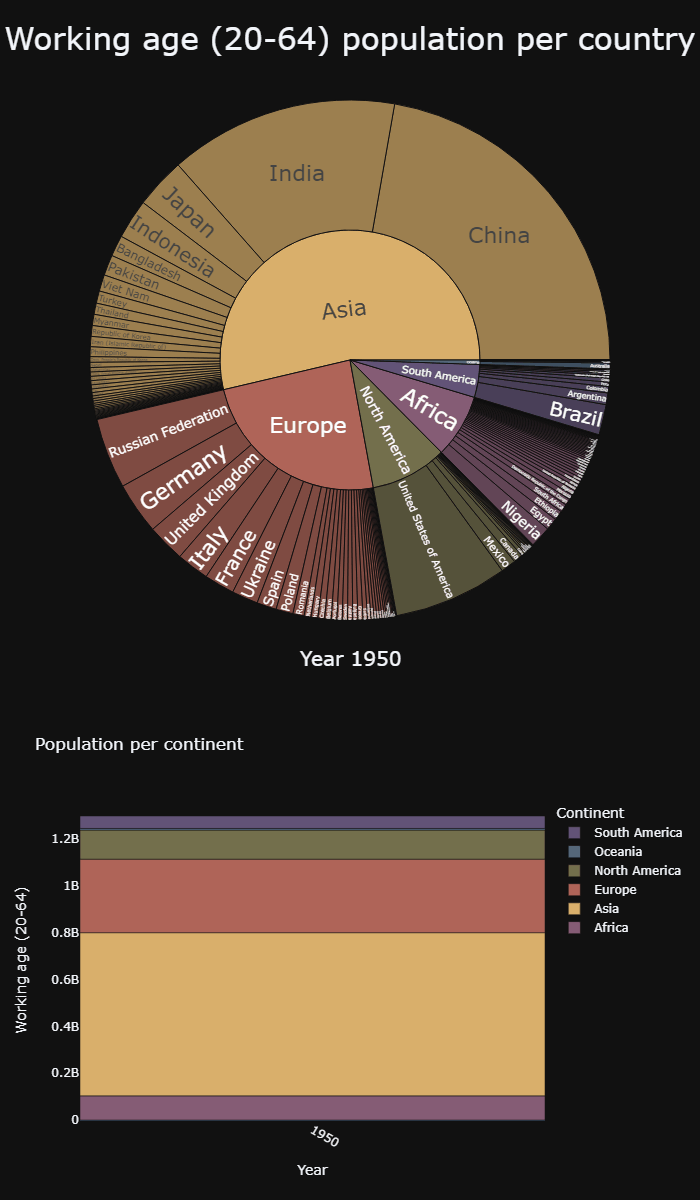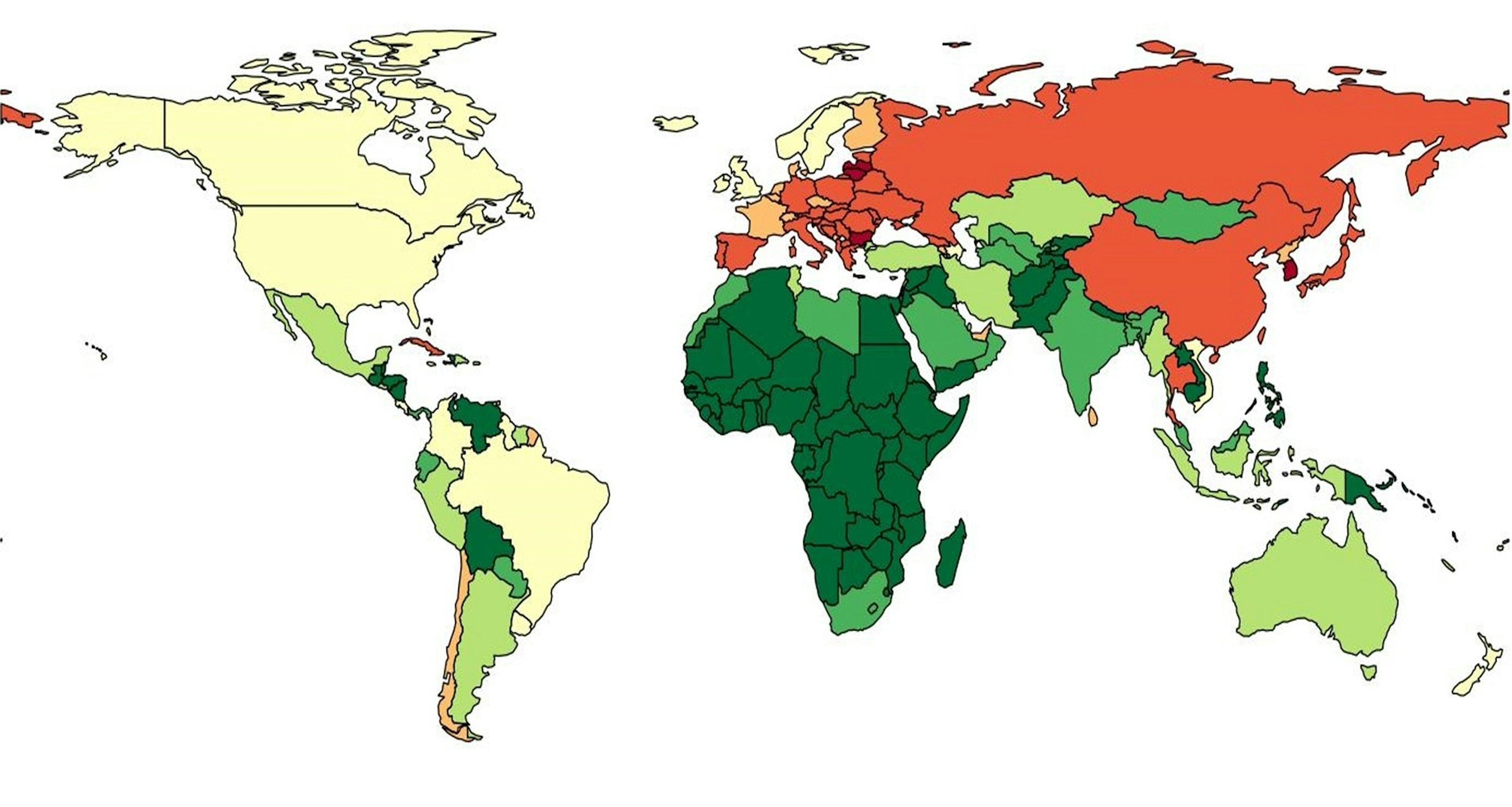Working age population around the world
One of the driving factors of the economy is the working age population. In many countries this number is decreasing already. The world’s working age population without Africa will decline starting from 2046. In Europe a shrinking working age population is reality since 2013 and will shrink further until the end of the century. In contrast to the working age population, the number of people above 80 is increasing, which leads to a growth of the dependency quotient in developed countries.
The changing of the working age population is shown below from 1950 to 2100. The development of the working age population is sorted by countries and continents relative to each other in a sunburst diagram and in absolute numbers by continent in a bar diagram.
The data from 1950 to 2020 are actual numbers from the UN and from 2021 to 2100 the numbers are from the UN reference scenario.

The growth of Africa is enormous. In 1950 Africa was even smaller than Europe and North America. But already in the beginning of the new century Africa overtakes those two continents and catches up to Asia at the end of the 21. Century. As already mentioned above, the working age population of the world without Africa starts to decline in 2046. In Europe this decline started more than 30 years earlier in 2013. Already in 2023, the European working age population shrinks by 3 million people per year. This is almost equivalent to the number of Berlins inhabitants.
In Asia, the working age population declines from 2048 with the highest decline in 2082 and almost 15 million less working age people in one year. North- and South America are in a similar range to Asia in terms of time, but of course the maximum value is significantly lower at 0.7 respectively 1.7 million due to the smaller population. The share of Asia is impressive. Asia will account for more than half of the working population until around 2070. In 1996, India and China alone provided astonishing 40% of the worldwide working age population. Japan is going through a sharp decline, in 1950 Japan is still in third place in terms of the working age population and will slip down to twelfth place by 2100.
Looking at the world, it is striking that the strong increase in the working population from the 1970s to about the present day was largely driven by the growth of Asia. In the future, however, Africa will be the driving continent in this regard. From about 2080 the global working population begins to stagnate with a first decrease in 2095.
Our future depends very much on demographic developments. However, the demographic development of the near future can be predicted well. Influences on the labour market can be derived from this, which means that upcoming crises can be better anticipated. The understanding of the influence of demography on economic developments become more and more relevant on the agenda of decision makers. The WDA Forum organizes a Workshop at which the interactions between demographics and the financial market are shown and the emerging opportunities and risks are analysed.
